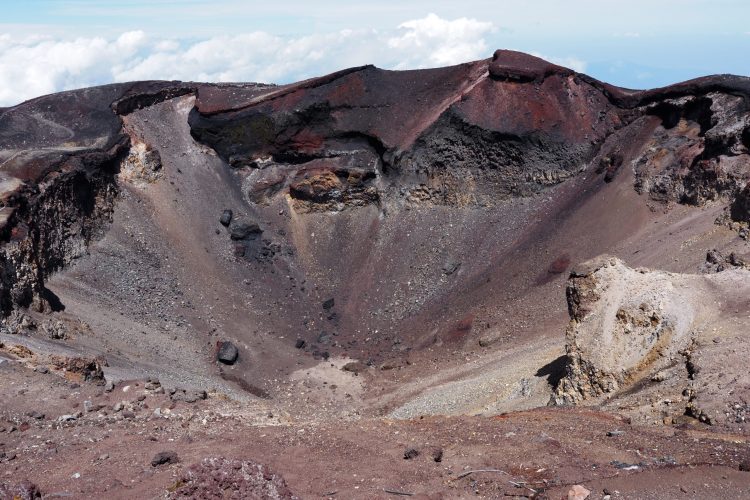Mt. Fuji Blog
Discover valuable insights and practical tips for climbing Mt. Fuji, including cultural experiences.
This blog is based on the local knowledge of our expert guides to enhance your journey!
Discover valuable insights and practical tips for climbing Mt. Fuji, including cultural experiences. This blog is based on the local knowledge of our expert guides to enhance your journey!
Why Japan's Sacred Mountain Became a UNESCO World Heritage Site
June 26, 2025

Why Japan’s Sacred Mountain Became a UNESCO World Heritage Site
Planning your Mt. Fuji climb tour? You’re about to experience one of the world’s most extraordinary UNESCO World Heritage Sites! Mount Fuji isn’t just Japan’s tallest peak – it’s a living symbol that has shaped Japanese culture, spirituality, and art for over a millennium.
What Makes Mount Fuji a World Heritage Site?
In 2013, Mount Fuji earned its place on the UNESCO World Heritage List not as a natural site, but as a cultural landscape. This designation recognizes the mountain’s profound influence on Japanese civilization and its role as a source of artistic inspiration worldwide.
The World Heritage designation includes 25 component sites spread across the mountain and surrounding areas, each telling a unique story of Japan’s relationship with this sacred peak.
The Sacred Sites That Tell Mount Fuji’s Story
Fujisan Hongū Sengen Shrine
Located at the mountain’s base, this ancient shrine has been the spiritual gateway to Mount Fuji for over 1,000 years. Pilgrims traditionally visit here before beginning their climb, seeking blessings for a safe journey.
The Summit Shrines
At Mount Fuji’s peak, you’ll discover Kusushi Shrine and Sengen Shrine, where climbers have offered prayers for centuries. These sacred spaces transform your climbing experience from a physical challenge into a spiritual journey.
Hitoana Fuji-ko Yōhai-jo
This remarkable cave served as a meditation retreat for followers of Fuji-ko, a religious movement centered on Mount Fuji worship. The cave represents the deep spiritual connection between the Japanese people and their sacred mountain.
Shiraito Falls and Oshino Hakkai
These pristine water sources, fed by Mount Fuji’s snowmelt, demonstrate the mountain’s life-giving properties. The crystal-clear springs have been considered sacred for generations and are believed to possess purifying powers.
Why This Matters for Your Climbing Experience
Understanding Mount Fuji’s World Heritage status enriches your climbing adventure beyond the physical achievement. You’re not just reaching Japan’s highest point – you’re participating in a tradition that connects you to:
Centuries of pilgrims who made this same journey seeking spiritual enlightenment
Legendary artists like Hokusai, whose “Thirty-six Views of Mount Fuji” made this mountain globally famous
Modern adventurers from around the world who’ve been drawn to this iconic peak
Cultural Treasures Along Your Route
Art and Literature
Mount Fuji has inspired countless masterpieces, from traditional woodblock prints to contemporary photography. The mountain appears in classical Japanese poetry, modern novels, and even video games, making it perhaps the most artistically celebrated mountain on Earth.
Spiritual Practices
The climbing routes themselves follow ancient pilgrimage paths. Each station along the way marks not just your physical progress, but spiritual milestones recognized for over 1,000 years.
Living Traditions
Local communities around Mount Fuji maintain traditional crafts, from sake brewing using the mountain’s pure water to textile weaving inspired by the mountain’s changing seasons.
Planning Your World Heritage Adventure
When you join our Mt. Fuji climb tour, you’re experiencing this World Heritage Site as it was meant to be discovered – through mindful exploration that respects both the natural environment and cultural significance.
Best Times to Experience the Heritage Sites
July to September: Official climbing season when all shrines and facilities are accessible
Spring and Autumn: Perfect for visiting the base shrines and surrounding cultural sites
Winter: Ideal for appreciating the mountain’s snow-capped beauty from the heritage viewpoints
What to Expect on Your Cultural Climbing Experience
Our expert guides share stories about each heritage component you encounter, from the significance of torii gates marking sacred boundaries to the meaning behind traditional climbing customs still practiced today.
Beyond the Climb: Exploring the Complete World Heritage Site
Your Mount Fuji experience doesn’t end at the summit. The World Heritage designation encompasses an entire cultural landscape that includes:
Traditional villages where generations have lived with Mount Fuji as their daily backdrop
Historic hot springs (onsen) formed by the mountain’s volcanic activity
Museums preserving centuries of Fuji-related art and artifacts
Viewpoints that have inspired artists and poets for generations
Join the Legacy
Every year, hundreds of thousands of climbers from around the world add their footsteps to the ancient paths of Mount Fuji. By choosing a responsible tour operator, you help preserve this World Heritage Site for future generations while creating your own unforgettable memories.
Ready to experience Mount Fuji’s World Heritage magic firsthand? Our Mt. Fuji climb tours combine the thrill of reaching Japan’s highest peak with deep cultural understanding, ensuring your adventure honors both the mountain’s natural beauty and its profound cultural significance.
Book your World Heritage climbing experience today and discover why Mount Fuji has captured hearts and imaginations for over a thousand years!
Planning your Mt. Fuji climb tour? You’re about to experience one of the world’s most extraordinary UNESCO World Heritage Sites! Mount Fuji isn’t just Japan’s tallest peak – it’s a living symbol that has shaped Japanese culture, spirituality, and art for over a millennium.
What Makes Mount Fuji a World Heritage Site?
In 2013, Mount Fuji earned its place on the UNESCO World Heritage List not as a natural site, but as a cultural landscape. This designation recognizes the mountain’s profound influence on Japanese civilization and its role as a source of artistic inspiration worldwide.
The World Heritage designation includes 25 component sites spread across the mountain and surrounding areas, each telling a unique story of Japan’s relationship with this sacred peak.
The Sacred Sites That Tell Mount Fuji’s Story
Fujisan Hongū Sengen Shrine
Located at the mountain’s base, this ancient shrine has been the spiritual gateway to Mount Fuji for over 1,000 years. Pilgrims traditionally visit here before beginning their climb, seeking blessings for a safe journey.
The Summit Shrines
At Mount Fuji’s peak, you’ll discover Kusushi Shrine and Sengen Shrine, where climbers have offered prayers for centuries. These sacred spaces transform your climbing experience from a physical challenge into a spiritual journey.
Hitoana Fuji-ko Yōhai-jo
This remarkable cave served as a meditation retreat for followers of Fuji-ko, a religious movement centered on Mount Fuji worship. The cave represents the deep spiritual connection between the Japanese people and their sacred mountain.
Shiraito Falls and Oshino Hakkai
These pristine water sources, fed by Mount Fuji’s snowmelt, demonstrate the mountain’s life-giving properties. The crystal-clear springs have been considered sacred for generations and are believed to possess purifying powers.
Why This Matters for Your Climbing Experience
Understanding Mount Fuji’s World Heritage status enriches your climbing adventure beyond the physical achievement. You’re not just reaching Japan’s highest point – you’re participating in a tradition that connects you to:
Centuries of pilgrims who made this same journey seeking spiritual enlightenment
Legendary artists like Hokusai, whose “Thirty-six Views of Mount Fuji” made this mountain globally famous
Modern adventurers from around the world who’ve been drawn to this iconic peak
Cultural Treasures Along Your Route
Art and Literature
Mount Fuji has inspired countless masterpieces, from traditional woodblock prints to contemporary photography. The mountain appears in classical Japanese poetry, modern novels, and even video games, making it perhaps the most artistically celebrated mountain on Earth.
Spiritual Practices
The climbing routes themselves follow ancient pilgrimage paths. Each station along the way marks not just your physical progress, but spiritual milestones recognized for over 1,000 years.
Living Traditions
Local communities around Mount Fuji maintain traditional crafts, from sake brewing using the mountain’s pure water to textile weaving inspired by the mountain’s changing seasons.
Planning Your World Heritage Adventure
When you join our Mt. Fuji climb tour, you’re experiencing this World Heritage Site as it was meant to be discovered – through mindful exploration that respects both the natural environment and cultural significance.
Best Times to Experience the Heritage Sites
July to September: Official climbing season when all shrines and facilities are accessible
Spring and Autumn: Perfect for visiting the base shrines and surrounding cultural sites
Winter: Ideal for appreciating the mountain’s snow-capped beauty from the heritage viewpoints
What to Expect on Your Cultural Climbing Experience
Our expert guides share stories about each heritage component you encounter, from the significance of torii gates marking sacred boundaries to the meaning behind traditional climbing customs still practiced today.
Beyond the Climb: Exploring the Complete World Heritage Site
Your Mount Fuji experience doesn’t end at the summit. The World Heritage designation encompasses an entire cultural landscape that includes:
Traditional villages where generations have lived with Mount Fuji as their daily backdrop
Historic hot springs (onsen) formed by the mountain’s volcanic activity
Museums preserving centuries of Fuji-related art and artifacts
Viewpoints that have inspired artists and poets for generations
Join the Legacy
Every year, hundreds of thousands of climbers from around the world add their footsteps to the ancient paths of Mount Fuji. By choosing a responsible tour operator, you help preserve this World Heritage Site for future generations while creating your own unforgettable memories.
Ready to experience Mount Fuji’s World Heritage magic firsthand? Our Mt. Fuji climb tours combine the thrill of reaching Japan’s highest peak with deep cultural understanding, ensuring your adventure honors both the mountain’s natural beauty and its profound cultural significance.
Book your World Heritage climbing experience today and discover why Mount Fuji has captured hearts and imaginations for over a thousand years!
